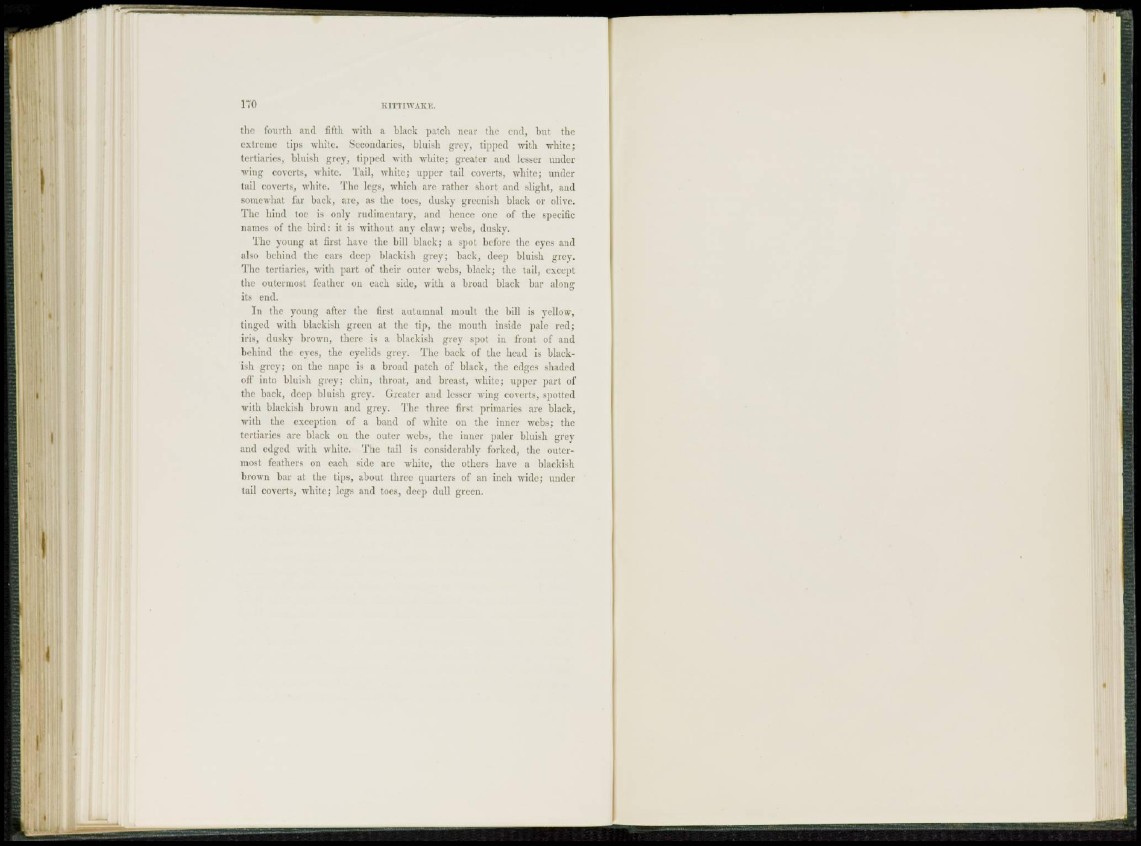
the fourth and fifth with a black patch near the end, but the
extreme tips white. Secondaries, bluish grey, tipped with white;
tertiaries, bluish grey, tipped with white; greater and lesser under
wing coverts, white. Tail, white; upper tail coverts, white; under
tail coverts, white. The legs, which are rather short and slight, and
somewhat far back, arc, as the toes, d u s k y greenish black or olive.
The bind toe is only rudimentary, and hence one of the specific
names of the bird: it is without any claw; webs, dusky.
The young at first have the bill black; a spot before the eyes and
also behind the ears deep blackish grey; back, deep bluish grey.
The tertiaries, with part of their outer webs, black; the tail, except
the outermost feather on each side, with a broad black bar along
its end.
I n the young after the first autumnal moult the bill is yellow,
tinged with blackish green at the tip, the mouth inside pale red;
iris, dusky brown, there is a blackish grey spot in front of and
behind the eyes, the eyelids grey. The back of the head is blackish
grey; on the nape is a broad patch of black, the edges shaded
off into bluish grey; chin, throat, and breast, white; upper part of
the back, deep bluish grey. Greater and lesser wing coverts, spotted
with blackish brown and grey. The three first primaries are black,
with the exception of a band of white on the inner webs; the
tertiaries are black on the outer webs, the inner paler bluish grey
and edged with white. The tail is considerably forked, the outermost
feathers on each side arc white, the others have a blackish
brown bar at the tips, about three quarters of an inch wide; under
tail coverts, white; legs and toes, deep dull green.